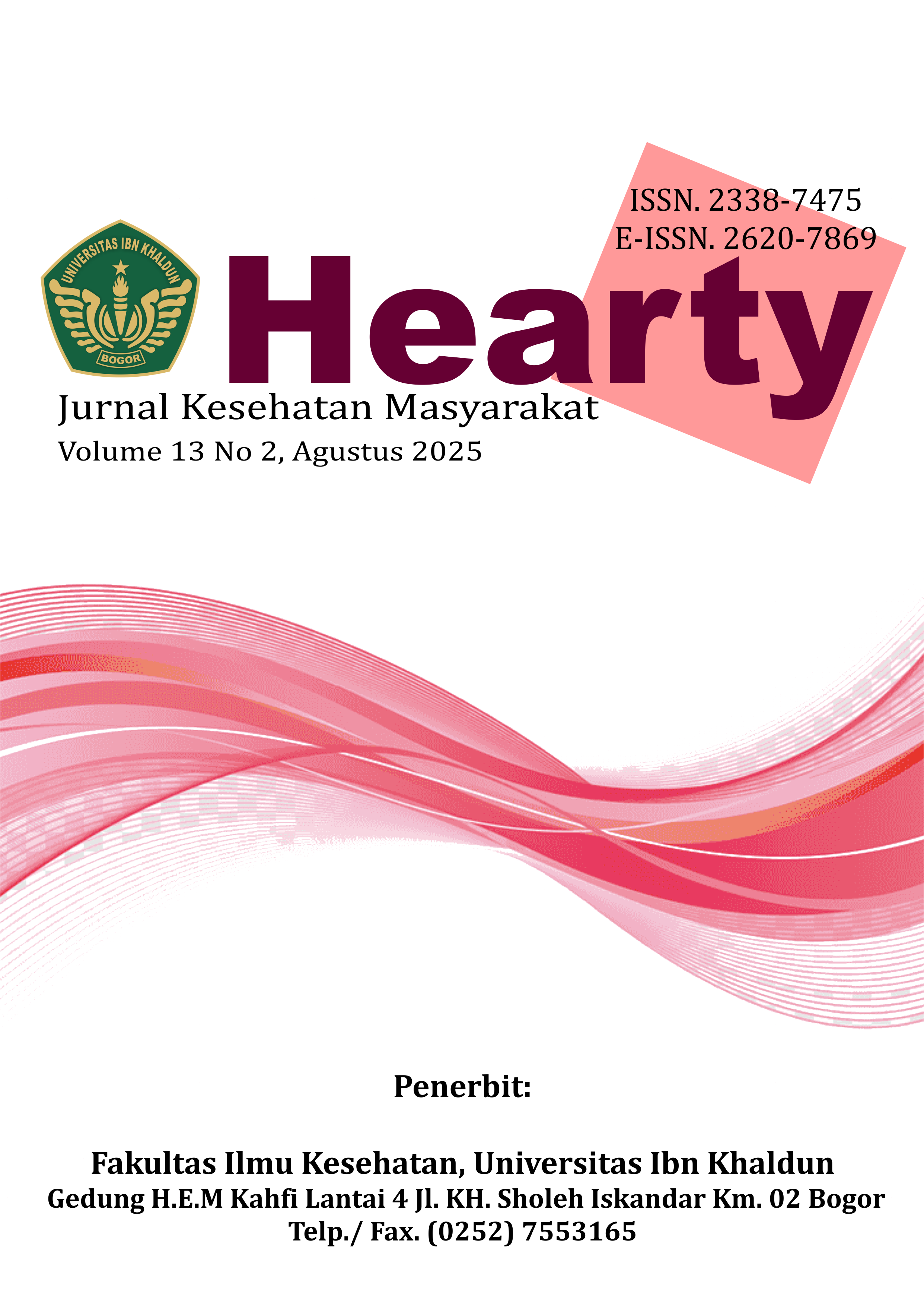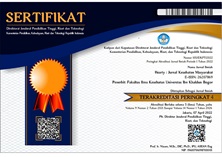THE EFFECT OF PUZZLE GAMES ON THE DEVELOPMENT OF FINE MOTORCY IN CHILDREN AGED 3-5 YEARS AT POSYANDU, BANTARJAYA VILLAGE, PEBAYURAN DISTRICT, BEKASI DISTRICT, 2023
DOI:
https://doi.org/10.32832/hearty.v13i2.16090Abstract
Introduction; Fine motor skills are movements that involve fine muscles or certain parts of the body. The government program is to detect children's growth and development by conducting Early Growth and Development Intervention Detection Stimulation (SDIDTK). SDIDTK can prevent developmental deviations and emotional deviations. Several factors influence the development of fine motor skills in children, such as genetic factors (gender, ethnicity, biological factors, physical environmental factors, psychosocial, and family factors (parental parenting patterns, customs, parental education) (Ulfa, 2021). A preliminary study was carried out at the Anggrek Posyandu, Bantarjaya Village, by implementing early growth and development intervention detection stimulation (SDIDTK) for children aged 3 - 5 years. Data obtained at the Anggrek Posyandu, Bantarjaya Village, Pebayuran District, obtained results from 185 children, 28 of whom had deviant assessment results. , 47 children with doubtful results, and 110 children with normal results. Of the 28 children with deviant assessment results, 14 of them were due to low parental education, unsupportive environment, low economic status, and never being introduced to puzzle games. Meanwhile, 10 of them had doubtful assessments. 47 children due to the environment and economics. Problem Formulation: The impact of fine motor skills in children carries the risk of affecting psychosocial maladaptation and academic achievement. Research Objectives: To determine the influence of puzzle games on the fine motor development of children aged 3-5 years at Posyandu, Bantarjaya Village, Pebayuran District, Bekasi Regency in 2023. Research methods; Using quantitative methods, a quasi-experimental approach. The data processing system uses SPSS Version 25. Univariate, bivariate analysis (starting with a normality test using Shapirowilk, with normal results if the condition is p ≥ 0.05, followed by the T-dependent test (paired sample T-test) if the data is normally distributed to see the mean differences in groups and use the Independent T-test for mean differences in groups and the Mann-Whitney test). Research results: Based on the age of the respondents, most of them were 5 years old, 18 people 952.95). while 4-year-olds numbered 10 people (29.4%) and 3 year olds 6 people 917.6%), parents' education was mostly SMA/PT as many as 20 people (58.8), parents' occupations were mostly working parents as many as 21 people (61.8) In the Developmental Intervention group fine motor The average fine motor development before intervention was given was 2.47-3.00 with a minimum value of 2 and a maximum of 6 and a standard deviation value of 0.615. After being given the intervention, it was found that the average value of fine motor development increased to 2.94 - 3.00 with a minimum value of 4 and a maximum of 6 and a standard deviation value of 0.239. In the control group before it was given it was 4.76 - 5.00 with a minimum value of 3 and a maximum value of 6 and the standard value deviation 1,147. After being given the intervention, it was found that the average value of fine motor development increased to 5.76 - 6.00 with a minimum value of 5 and a maximum of 6 and a standard deviation value of 0.437. The Mann-Whitney test obtained a value of p = 0.350, meaning the value is greater than the significance level, namely α = 0.05. Conclusions and suggestions: Ho is accepted and Ha is rejected, which means there is no influence of the puzzle playing method on the fine motor development of children aged 3-5 years at Posyandu Anggrek, Bantarjaya Village, Pebayuran Bekasi District. Suggestion ; It is hoped that this research can be developed further with different variables and can develop methods and media that have been innovated.
























